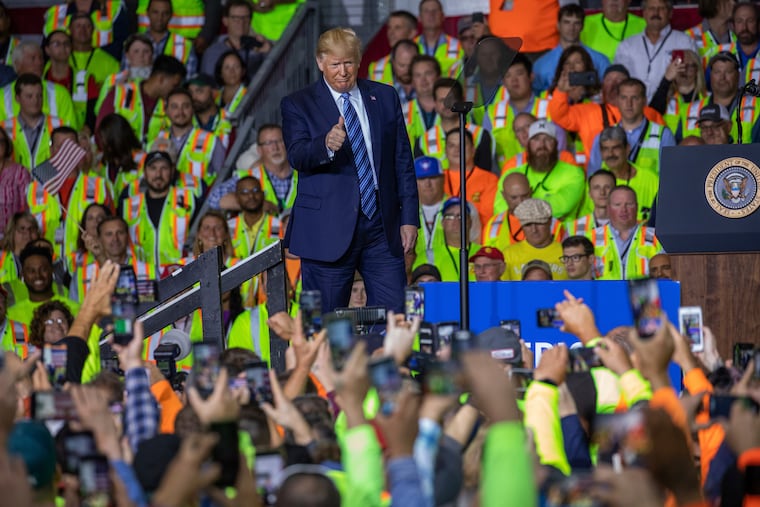Pennsylvania leaders need to figure out how to jumpstart innovation economy | Editorial
Pennsylvnia is falling short in encouraging innovation – measured, in part, by new patents, new companies, and jobs in tech.

In a speech Tuesday at the Shell cracker plant in Beaver, Pennsylvania, President Trump blew kisses to boilermakers, carpenters, cement finishers, ironworkers, plumbers, steamfitters, and Teamsters in the audience to celebrate the $6 billion plant that will produce billions of pounds of plastic pellets per year for manufacturing.
After ridiculing the notion of wind power, he addressed one audience member: “You don’t want to make widgets. You want to learn how to make a computer, [working with] a little tiny piece of stuff … with those big beautiful hands of yours? … No, you want to make steel and you want to dig coal and that’s what you want to do.”
This cringe-worthy throwback to the past — Coal! Steel! Plastics! — took place, ironically, the same day that a new report sounded the alarm on how Pennsylvania has fallen behind on creating an “innovation economy” — that is, tech-based advanced manufacturing industries like aerospace, medical devices, energy, and high tech activities like R&D services, telecommunications, and software.
The Brookings Institution documented how Pennsylvania is falling short in encouraging innovation — measured, in part, by new patents, new companies, and jobs in tech — by illustrating how other states are leading in innovation. That includes New Jersey, which has modernized its R&D tax credit program; Rhode Island’s industry cluster grants, and Maryland’s rural business innovation initiative.
Brookings calls Pennsylvania’s story one of stalled progress and unfulfilled potential. That wasn’t always the case. The highly regarded Ben Franklin Technology Partners was a pioneer when it was created under Governor Richard Thornburgh in 1982. The Science Center came even earlier. Cities like Philadelphia and Pittsburgh have led in building this particular economy thanks in part of their concentration of higher education centers.
But there is no momentum where it counts: at the state level.
Why? Our polarized political class — where much of this momentum must originate — has solidified. Harrisburg digs further into partisanship every year (note to lawmakers: Collaborative problem solving is one of the hallmarks of innovation). There is also a deepening divide — and mutual suspicion between — rural regions and urban centers. Innovation and growth cannot be clustered only around big cities. Those academic and business leaders of the state’s larger cities need to figure out how to involve and include rural regions in building this economy.
Stakeholders, like the Chamber of Commerce of Greater Philadelphia, can spur some of that partnership, and is pushing its Grow PA initiative (and in the fall, convening stakeholders around innovation).
But this must have wider support among lawmakers, elected officials and leaders from all over the state. Senators Bob Casey and Pat Toomey also have a critical role to play, not just in fighting for federal R&D funding, but supporting a state planning process (To say nothing of modeling bipartisanship behavior).
The state has fallen behind states a fraction of our size in part by allowing a mind-set of us vs. them, big vs. small, and urban vs. rural to keep us from building for a shared future. That thinking is as dangerously outdated as promises to build the state’s economy with more coal mining jobs.